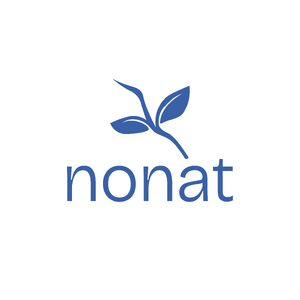株式会社nonat、周産期医療における深層学習を用いた臨床研究を開始
医療機器プログラム(SaMD)への開発を見据えた臨床研究を開始。従来にない先進的なアプローチで早産や死産などの社会課題に挑む。
株式会社nonat(本社:東京都渋谷区、代表取締役社長:伊藤敬佑)は、岐阜大学大学院医学系研究科医学研究等倫理審査委員会様より承認を受け、医療法人セントポーリア操レディスホスピタル様との共同研究を開始いたします。本研究では母体の生体情報と胎児由来のシグナルとのマッピング関係を深層学習により解析します。
<背景>
早産・死産の原因として、母親の年齢や子宮内感染症、胎児の遺伝子異常など数多くのリスクが指摘されていますが、中には原因がはっきりとしないものも存在します。世界的には全出産の約10%が早産であると言われていますが(1)、本邦においては高齢出産など社会情勢の変化に伴い、将来的に増加傾向にあると言われています。また早産に伴う長期的な影響についても現在多くの議論がなされており、早産児として生まれた児が、その後の人生において発症する生活習慣病(高血圧(3)や糖尿病(4))のリスクが増加する可能性も指摘されています。医療経済的観点からも早産・死産が及ぼす影響は大きく、総合周産期母子医療センターでは今日非常に多くの医療資源が必要とされています。また死産に関しても、我が国において妊娠22週以降の死産は5歳以下の子供の全死亡数を上回ると言われ、こちらも重要な社会課題です(2)。
このように個人・社会双方にとって喫緊の課題である早産・死産ですが、現在の医学ではこれらの正確な予測は非常に難しく、有効な介入方法は限られています(5)(6)。その理由の一つに、院外において胎児に関する客観的な情報を取得することが非常に難しいことが指摘されます(7)。これにより医師は患者の主観に基づく訴えを頼りに医療介入の判断を行わざるを得ず、結果的に早産・死産を予防する目的で行われる治療についても、その有効性の是非には専門家の意見が分かれているのが現状です。
<本研究の意義・今後の展開>
この課題解決への手がかりとして、本研究では、医学領域においてもその有用性が注目される深層学習の技術を用いて、お母さんから簡便に取得できる生体情報と、胎児が発する生体信号との間に相関関係があるのかを深層学習を用いて解析します。このアルゴリズムの開発により、院外においても妊婦が自分の主観に頼ることなく、子宮内環境における客観的な指標を取得できることを目指します。このことは本邦のみならず世界中の周産期医療において、早産・死産に関する有益な指標を医師に提供するだけでなく、助産師への夜間電話相談においても、医療スタッフ・患者双方にとって信頼性の高い情報を提供し、円滑なコミュニケーションへとつながる可能性をもたらします。院外において、早産・死産の予防を目的とした早期介入を実現するための重要な一歩として、弊社は本研究を正式に開始することとなりました。本研究における成果、知財を基に今後の商品開発へと応用します。
<株式会社nonatについて>
株式会社nonatは医学的・科学的知見を踏まえ、イノベーションを通じて周産期領域における早産や流産などの社会課題に取り組んでいます。2023年に創業後、特許出願を完了し、現在薬事承認を見据えた医療機器の開発を行っています。
株式会社nonat:https://nonat-home.com
Clinical research
"Analysis for biometric information from mothers using deep learning algorithm"
nonat Inc.
We are pleased to announce that nonat Inc. (Shibuya, Tokyo; CEO: Keisuke Ito) has received approval from the Gifu University Graduate School of Medicine's Ethics Committee for Medical Research, and has commenced a joint clinical research project with Misao-Ladies Hospital. This study aims to analyze the mapping-relationship between maternal biometric information and fetal-origin signals using deep learning algorithm.
<Background>
Premature and stillbirths are attributed to various risks such as maternal age, intrauterine infections, and fetal genetic abnormalities, but some causes remain unclear. Worldwide, approximately 10% of all births are preterm (1), and this percentage is expected to increase in Japan due to societal changes like older age pregnancies. The long-term impacts of preterm birth are also widely debated, with increased risks of lifestyle diseases such as hypertension (3) and diabetes (4) later in life.
From a healthcare-economic perspective, the impact of premature and stillbirths is significant, requiring substantial medical resources at comprehensive perinatal mother and child medical centers. Stillbirths, particularly after 22 weeks of pregnancy, also constitute a significant social issue as they exceed the total deaths of children under five (2).
Despite being an urgent issue for both individuals and society, predicting and effectively intervening in cases of preterm and stillbirth remains a significant challenge in current medicine (5)(6). One reason is the difficulty in obtaining objective information about the fetus outside of medical facilities (7). This forces doctors to rely on patients' subjective complaints for medical intervention, leading to divided opinions among experts on the effectiveness of treatments aimed at preventing preterm and stillbirths.
<Significance of the Study>
To tackle these challenges, this study employs deep learning, a technology gaining prominence in the medical field, to analyze whether there is a correlation between easily-obtainable biometric information from mothers and signals emitted by the fetus. The development of the algorithm aims to enable pregnant women to obtain objective-indicators of the uterine environment outside hospitals without relying on their subjective judgment. This could not only provide useful indicators for physicians worldwide in perinatal care for preterm and stillbirths, but also facilitate reliable information sharing in night-time consultations with midwives, enhancing communication between medical staff and patients. This research marks an important step in realizing early interventions aimed at preventing preterm and stillbirths outside of hospitals. The outcomes and insights from this study will be applied to future product development.
<About nonat Inc.>
nonat Inc. is dedicated to tackling societal challenges in the perinatal field, such as preterm birth and miscarriage, through innovation based on medical and scientific insights. Founded in 2023, we have completed patent applications and are currently developing medical devices with a focus on obtaining regulatory approval.
nonat Inc.:https://nonat-home.com
<references>
1.Dagklis T, Akolekar R, Villalain C, Tsakiridis I, Kesrouani A, Tekay A, et al. Management of preterm labor: Clinical practice guideline and recommendation by the WAPM-World Association of Perinatal Medicine and the PMF-Perinatal Medicine Foundation. Eur J Obstet Gynecol Reprod Biol. 2023 Dec;291:196–205.
2.Haruyama R, Gilmour S, Ota E, Abe SK, Rahman MM, Nomura S, et al. Causes and risk factors for singleton stillbirth in Japan: Analysis of a nationwide perinatal database, 2013–2014. Sci Rep. 2018 Mar 7;8(1):4117.
3.Vohr BR, Heyne R, Bann C, Das A, Higgins RD, Hintz SR, et al. High Blood Pressure at Early School Age Among Extreme Preterms. Pediatrics. 2018 Aug;142(2):e20180269.
4.Hovi P, Andersson S, Eriksson JG, Järvenpää AL, Strang-Karlsson S, Mäkitie O, et al. Glucose regulation in young adults with very low birth weight. N Engl J Med. 2007 May;356(20):2053–63.
5.Meertens LJE, van Montfort P, Scheepers HCJ, van Kuijk SMJ, Aardenburg R, Langenveld J, et al. Prediction models for the risk of spontaneous preterm birth based on maternal characteristics: a systematic review and independent external validation. Acta Obstet Gynecol Scand. 2018 Aug;97(8):907–20.
6.Honest H, Bachmann LM, Sundaram R, Gupta JK, Kleijnen J, Khan KS. The accuracy of risk scores in predicting preterm birth--a systematic review. J Obstet Gynaecol J Inst Obstet Gynaecol. 2004 Jun;24(4):343–59.
7.Bellussi F, Po’ G, Livi A, Saccone G, De Vivo V, Oliver EA, et al. Fetal Movement Counting and Perinatal Mortality: A Systematic Review and Meta-analysis. Obstet Gynecol. 2020 Feb;135(2):453–62.
このプレスリリースには、メディア関係者向けの情報があります
メディアユーザー登録を行うと、企業担当者の連絡先や、イベント・記者会見の情報など様々な特記情報を閲覧できます。※内容はプレスリリースにより異なります。
すべての画像
- 種類
- 商品サービス
- ビジネスカテゴリ
- 医療・病院システム・Webサイト・アプリ開発
- ダウンロード
